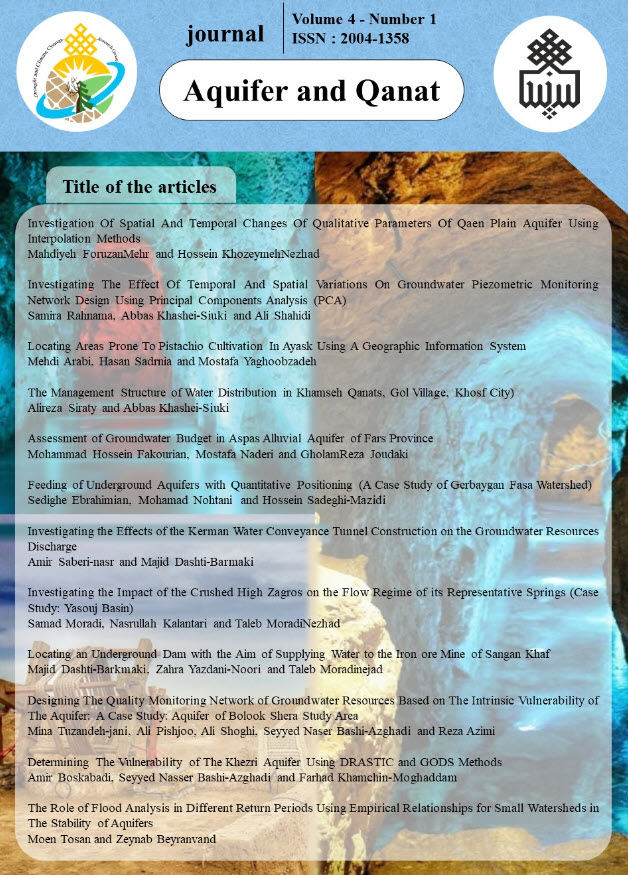Document Type : Original Article
Authors
1 Department of Science and Engineering, Faculty of Agriculture, University of Birjand
2 University of Birjand. Faculty of Agriculture, Department of Science and water engineering
Abstract
Qanat (aqueduct) is an Iranian native and technical knowledge for water acquisition and its transferring into agriculture prone lands and building settlements. Also, it is considered as the most sustainable way according to the geographical conditions of wide range of Iran’s drylands. Drought and increasing water demand in the past decades have led to a change in the way of water harvesting through well instead of Qanat where by exceeding Qanat scope and wasteful harvestings, it has caused many Qanat to be dried and intense drop in aquifers, which has resulted in the crisis situation of most plains and applying stainable methods such as inter-basin transfer by the water management sector. Therefore, the large number of Qanat and its proper dispersion in the driest lands of Iran necessitate paying attention to this national capital and its maintenance and restoration in order to meet some of the water requirements and alleviate tension and water scarcity crisis management. In this research, first the importance of Qanat and necessity of its protection are discussed in order to reward the value of Qanat and encourage its revival. Then, Qanat are classified into several classes according to different criteria. Later, the advantages and disadvantages of Qanat and its surface and underground recharge methods are studied. At last, the protective methods of drying sector and increasing the discharge of Qanat are presented in a categorized manner.
Keywords

